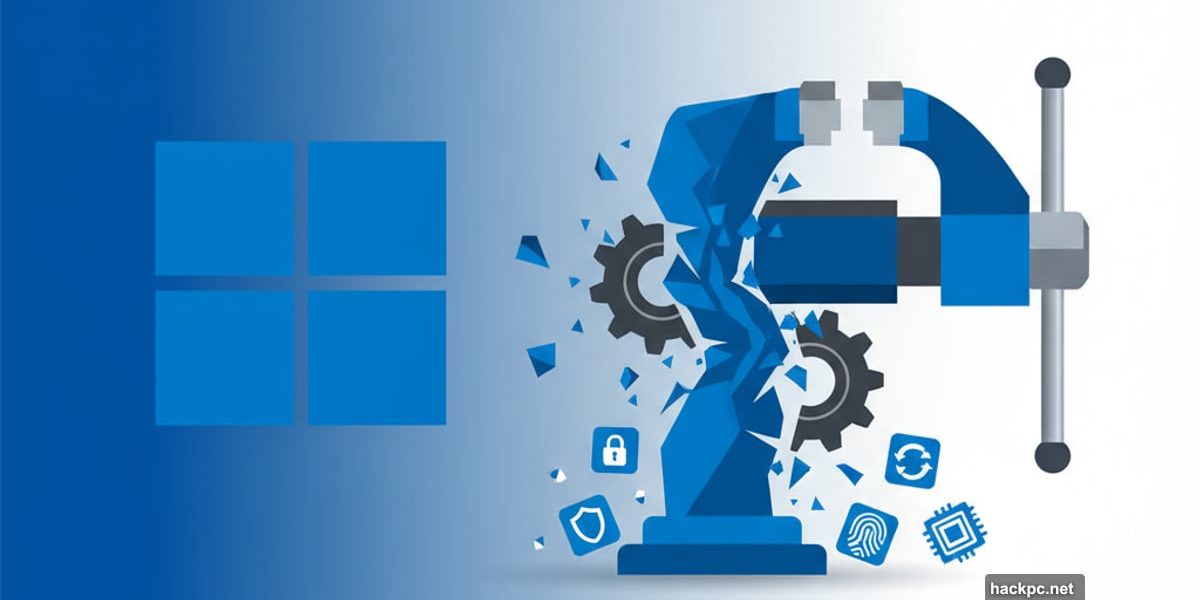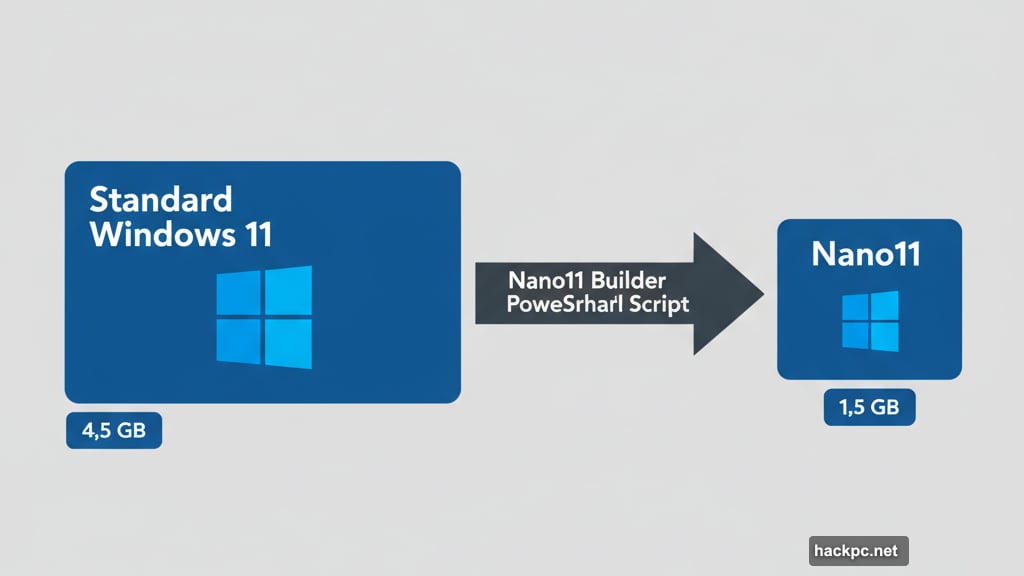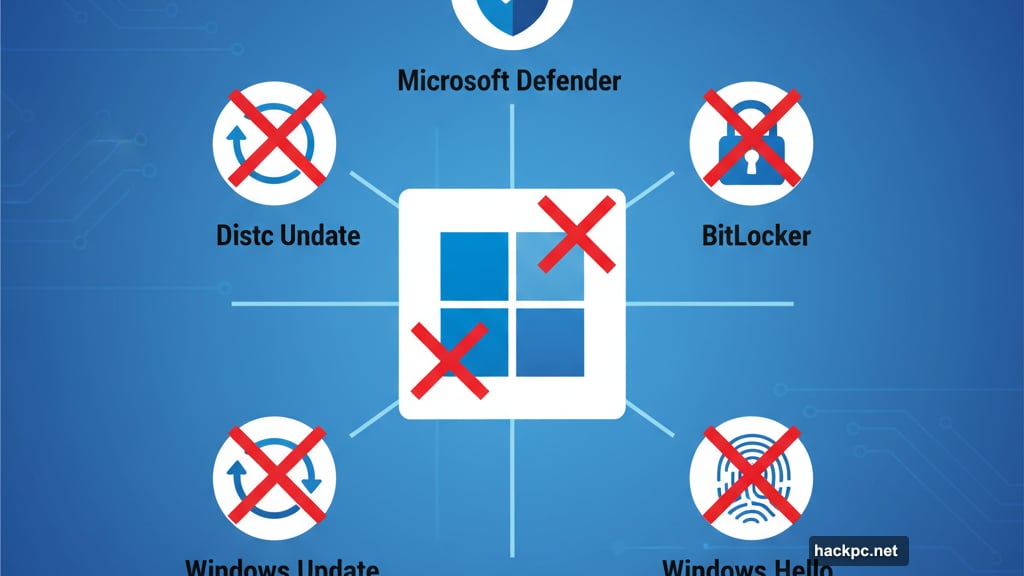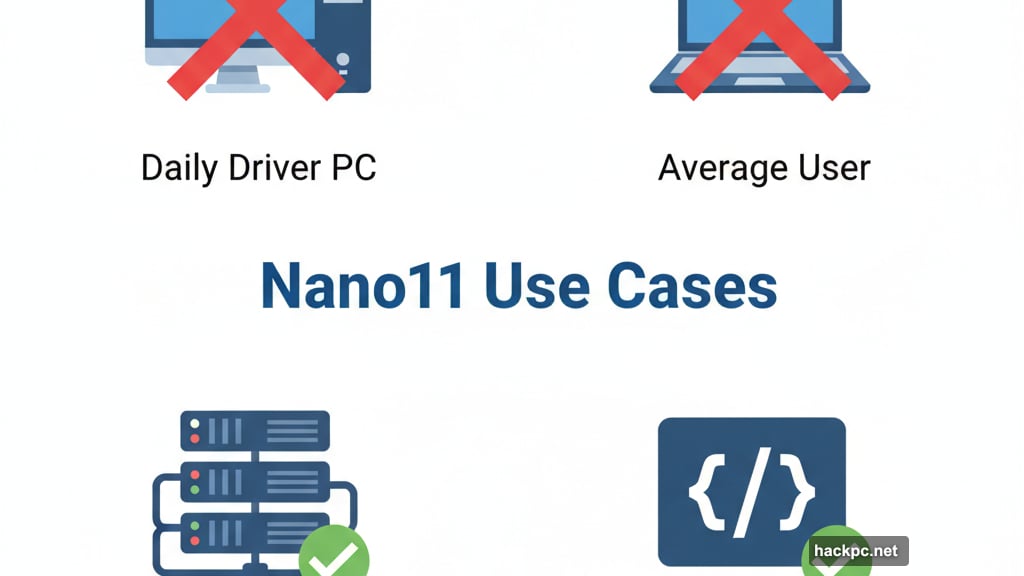
NTDEV released Nano11 Builder this week. It creates Windows 11 installers three times smaller than Microsoft’s bloated original.
But here’s the catch. This stripped-down version cuts so deep it removes essential system components. So you’ll sacrifice security updates, drivers, and basic functionality for that tiny file size.
Let’s explore what makes this possible and why most people shouldn’t use it.
Nano11 Goes Way Beyond Tiny11
NTDEV already created Tiny11, which removes Microsoft’s unwanted apps and services. Now Nano11 takes that concept to an extreme.
The new PowerShell script eliminates far more than bloatware. It strips out core Windows components most users actually need.
Gone are Microsoft Defender, BitLocker encryption, biometric authentication, and most system services. Plus, Windows Update disappears entirely. That means zero security patches or feature updates after installation.

In fact, you can’t add languages, install drivers, or enable features later. The system remains frozen in its initial state. So this creates a fundamentally unserviceable Windows 11 installation.
However, the results are impressive from a technical standpoint. Installation completes in about five minutes instead of the usual 30-45 minutes. Moreover, the install file shrinks to roughly one-third its normal size.
What Actually Gets Cut
Microsoft Defender removal means no built-in antivirus protection. Your system sits exposed to malware from day one.
BitLocker deletion eliminates drive encryption capabilities. Anyone accessing your hardware can read your files directly. Besides that, biometric features vanish completely. So forget about Windows Hello face recognition or fingerprint login.
The driver situation creates problems too. Windows normally includes thousands of drivers for hardware compatibility. Nano11 tosses most of them. Therefore, many devices won’t work without manual driver hunting.
Most concerning though is losing Windows Update. Security vulnerabilities get discovered constantly. Without updates, your system remains permanently vulnerable to every exploit found after installation.
Who Should Actually Use This

NTDEV designed Nano11 for developers and testing environments. Specifically, virtual machine deployments where update requirements don’t matter.
Software developers often spin up temporary Windows instances for testing. They need the OS running quickly, then delete it after testing completes. For that use case, Nano11 makes perfect sense.
Virtual machine enthusiasts can also benefit. Running multiple Windows VMs simultaneously consumes serious resources. So smaller installations mean more VMs per host machine.
However, average PC owners should avoid this completely. Your daily driver needs security updates, driver support, and system serviceability. Nano11 provides none of these essentials.
The Real Lesson Here
This experiment proves something important about Windows 11. Microsoft packs enormous amounts of optional software into the base installation.
OneDrive integration, Edge browser, countless pre-installed apps – none of these are technically necessary for Windows operation. Yet Microsoft forces them on everyone.

Some users desperately want these options removed. European users can actually uninstall Edge thanks to regulatory pressure. But elsewhere, Microsoft refuses to provide that choice.
NTDEV’s tools demonstrate that Windows could be significantly smaller. Plus, users could choose which components they actually want. But Microsoft’s business model depends on pushing their services and apps.
Tiny11 Remains the Better Option
For people wanting a streamlined Windows 11 without breaking core functionality, Tiny11 still makes more sense.
The original Tiny11 Builder removes Microsoft’s bloatware while preserving essential system components. You still get Windows Update, security features, and driver support.
That represents a much better balance for most users. You eliminate unwanted apps without crippling your operating system’s fundamental capabilities.
Nano11 serves as an interesting technical demonstration. It shows just how much can be stripped from Windows while maintaining basic bootability. But that doesn’t make it practical for everyday use.
Your Windows 11 installation needs updates, drivers, and security features. Otherwise, you’re running an increasingly vulnerable system that can’t adapt to new hardware or threats. So stick with Tiny11 if you want streamlining. Save Nano11 for VMs and testing environments where its limitations don’t matter.



Comments (0)